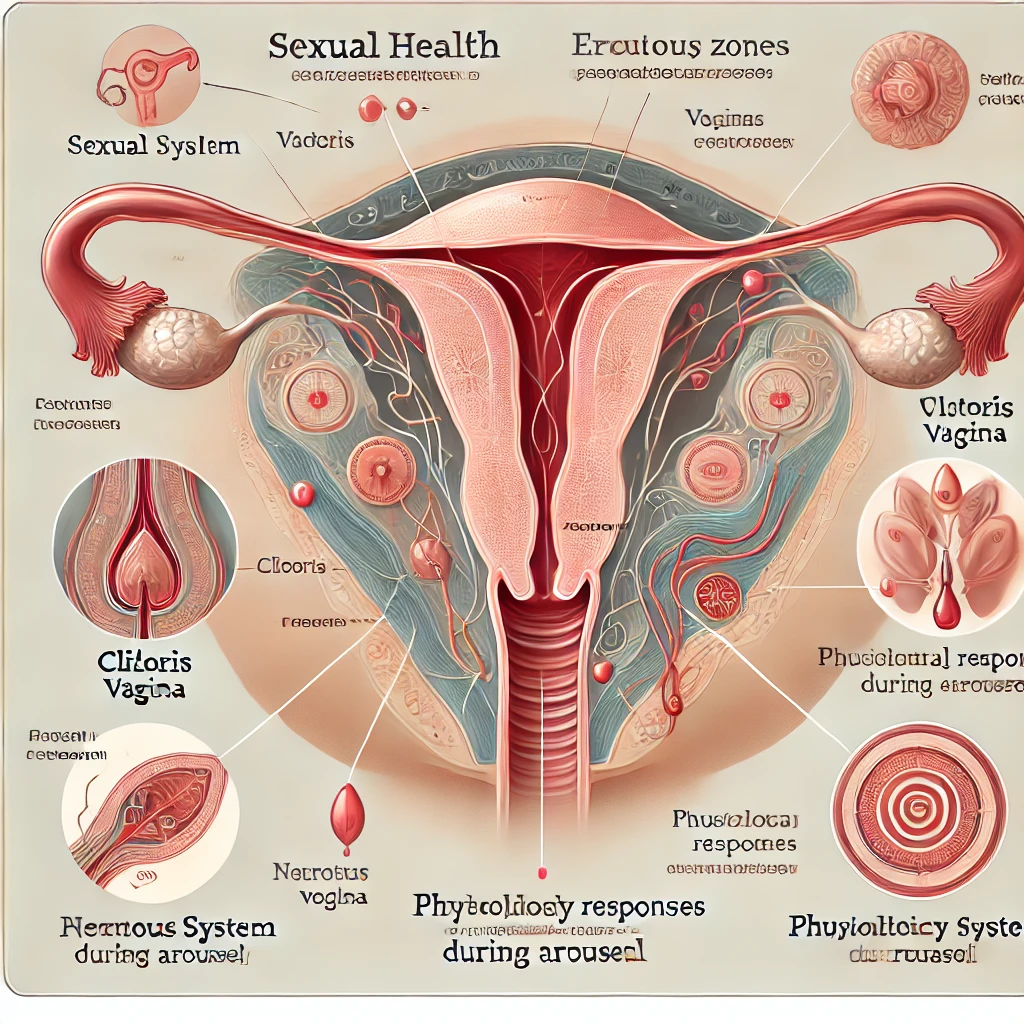1. Introduction of Female Orgasm
The female orgasm is a complex blend of psychological and physiological experiences, with unique pathways for each woman to achieve and experience it. This profound and often mysterious experience can be initiated by various forms of stimulation, providing insights into how women connect with their bodies and partners. Misconceptions around the female orgasm are common, but understanding its science is a powerful way to promote deeper intimacy and sexual well-being. This article takes a comprehensive look at female orgasm, discussing the intricate mechanisms behind it and offering insights for enhancing satisfaction and connection.
2. The Physiology of Female Orgasm
Pathways to Orgasm: Types of Stimulation
Achieving orgasm can stem from various types of stimulation, including both vaginal and erogenous zones (often the nipples). For most women, the primary source of orgasmic pleasure comes from stimulating the external clitoral glands. The clitoris is the most densely packed area of nerve endings in the body, making it exceptionally sensitive to touch and stimulation.
Anatomy of the Clitoris and Surrounding Areas
The clitoris is a complex structure with internal components like the clitoral legs and the vestibular bulbs, which wrap around the vagina. These regions contain erectile tissue that engorges and expands with blood flow when aroused. Some women achieve different types of orgasms by stimulating specific areas within the vagina, such as the so-called G-spot and cervix, or a combination of both.
Erogenous Zones and the Role of the Nipples
Erogenous zones are sensitive areas that, when stimulated, can offer pleasure and sexual arousal. The nipples, for example, are common erogenous zones, with each containing hundreds of nerve endings, making them highly sensitive. When nipples are stimulated, they activate the same areas in the brain’s genital sensory cortex as vaginal or clitoral stimulation, contributing to sexual arousal.
Body’s Physiological Response During Arousal
As sexual arousal intensifies, blood flows to the genital area, enhancing sensitivity. This increase in arousal heightens heart rate and respiratory rate, leading many women to experience rhythmic muscle contractions in the vagina, uterus, and anus during and after orgasm. These contractions usually last 0.8 to 17 seconds, varying from person to person.
Natural Lubrication and Physical Changes
Lubrication begins as hormones signal the brain to respond to sexual arousal. The vagina secretes fluids that facilitate smooth sexual activity, while the inner and outer labia become engorged with blood, swelling as arousal builds. Although female orgasm does not involve ejaculation, some women experience a release of fluid from the urethra, a mixture of urine and Skene’s gland secretions that contains urea, creatinine, uric acid, and prostate-specific antigen (PSA).
Hormonal Influences and Challenges
Factors such as hormonal contraception, pregnancy, aging, and menopause can make it difficult for some women to stay naturally lubricated, sometimes resulting in painful intercourse. These physical responses are as significant as psychological ones, reflecting the unique needs and variations women experience in their journey toward orgasm.

3. Psychological and Emotional Factors
Orgasm as a Psychological and Physiological Response
An orgasm isn’t solely a physical event; it’s often deeply psychological. Some women may require feelings of love and emotional connection to reach climax. Challenges like overwhelming stress, relationship issues, poor mental or physical health, history of trauma or abuse, and even religious beliefs or shame around sexuality can make achieving orgasm more difficult. Understanding and addressing these psychological elements is essential to creating a safe, fulfilling sexual experience.
The Impact of Stress, Anxiety, and Shame
Psychological barriers such as stress, anxiety, and feelings of shame can inhibit sexual response, reducing the likelihood of reaching orgasm. However, relaxation and self-confidence play a vital role in enhancing sexual satisfaction. Women who can approach sexual experiences free from shame or fear often report more satisfying experiences, demonstrating how emotional and mental health are foundational to sexual well-being.
4. Types of Female Orgasm
Clitoral Orgasm
Clitoral orgasms are the most frequently discussed type of orgasm among women. Since the clitoris is packed with nerve endings and very responsive to touch, consistent external stimulation often leads to orgasm for many women.
Vaginal Orgasm and Internal Stimulation
Some women report achieving orgasm through vaginal stimulation alone. This may be due to the internal clitoral network, which extends along the vaginal canal. Stimulation of areas like the G-spot and cervix may also trigger different orgasmic sensations, though every woman’s experience with these areas is unique. The G-spot, a sensitive area in the vaginal canal, can be a source of intense pleasure for some women. This type of orgasm often requires specific techniques and can be a unique experience for those sensitive in that area.
Blended Orgasm
A blended orgasm occurs when both the clitoris and vagina are stimulated simultaneously. The combination of external and internal stimulation can result in a more intense, layered experience as different nerve pathways converge, amplifying pleasure.
Anal Orgasm
Although not universally preferred, some women experience orgasm through anal stimulation. It’s essential that those exploring this route feel comfortable and proceed safely, as personal preference and comfort play a major role.
Multiple Orgasms
Unlike men, who generally need a refractory period before achieving orgasm again, many women can experience multiple orgasms in succession. The ability to sustain arousal allows some women to experience multiple waves of pleasure without needing a break.
5. Enhancing the Experience of Female Orgasm
Communication and Understanding Needs
Open communication about needs, preferences, and boundaries with a partner is essential for building intimacy. A safe and open environment encourages trust and helps alleviate anxiety, allowing both partners to explore and share without judgment.
Exploring Self and Sensitivity
Self-exploration is crucial to understanding one’s unique response to pleasure. By identifying sensitive areas and preferred types of touch, women can better communicate these preferences to their partners, enriching shared experiences.
Incorporating Diverse Stimuli and Techniques
Different types of touch and stimulation techniques can significantly enhance arousal and orgasmic response. Experimenting with tempo changes, using hands, tongue, or toys, and finding the ideal combination of clitoral, vaginal, or erogenous zone stimulation can provide new pathways to pleasure.
Breath Control and Rhythm Adjustment
Adjusting breath and rhythm during intimacy can help maintain arousal. Slow, deep breathing can enhance relaxation and focus, while synchronized rhythm with a partner fosters connection. Pausing and adjusting stimulation rhythm creates anticipation, often resulting in a stronger climax.

6. Conclusion
The female orgasm is a complex experience deeply rooted in both physiology and psychology, with each woman’s journey toward orgasm being unique. With the right combination of communication, exploration, and understanding, women and their partners can cultivate a fulfilling sexual experience that values intimacy and well-being when they have sex. Understanding and respecting the nuances of female orgasm allows it to be a source of pleasure, intimacy, and self-connection without pressure, embracing the full spectrum of a woman’s sexuality.


